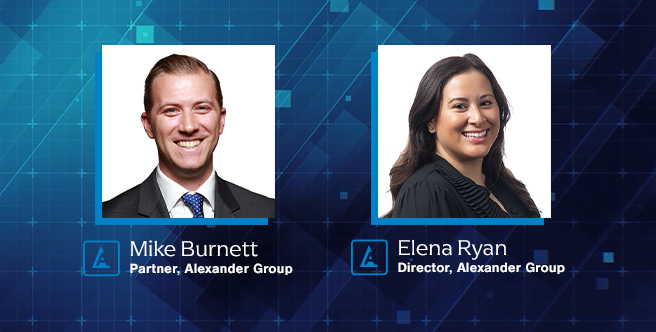Incentive Plan Fundamentals to Drive Material New Business
Business & financial services growth is driven by material, new business wins, often in the form of long-term contracts and partnerships. Our clients sometimes struggle with how to best compensate their top sellers, resulting in significantly overpaying or underpaying them. Worse, they may rely on extremely complex pay plans that spread payouts over years and contain numerous caveats, hurdles and milestones. This kind of failure manifests itself in lower growth, lower profitability and difficulty in attracting and retaining top sales talent. In this article, we will discuss the fundamentals of paying sellers for new business, and importantly, the key building blocks that help you decide on the most appropriate compensation plan.
Profitability
Before embarking on what may be your most important incentive plans for the firm, leaders need to understand the basic profitability of what they are selling. This is frequently overlooked or is just an afterthought. Service offerings can be quite complex, and actual profitability may vary greatly from initial estimates, especially for long-term partnerships or contracts.
Basic services may have lower margins, 15-25%, while complex services – often integrated with technology platforms may be +50%. Service margins will also vary by market and customer segment, with the largest, most strategic customers demanding the most price concessions.
Predictability and Longevity of Revenue Streams
The second item to consider is how long a revenue stream can be locked in. Is an annual contract expected to auto-renew every year? If you have a 3–5-year long contract, what are the expected odds of renewing at expiration and with what terms? If you have established a less formalized partnership, without stringent contracting terms, can you even estimate the potential length and annual revenue streams? You have to group your offerings into distinct categories:
- Auto-renew (XaaS or XaaS-like) offering that has at least a 3-year lifespan and is ideally much longer. These are highly valuable and may serve as a platform for significant upsell and long-term engagement.
- Tightly contracted offerings, generally 3-5 years, with minimum spend expectations and material penalties for early termination. These are traditional building blocks of effective service businesses, but you have to be careful not to discount significant margin to lock in longer terms. You also need to ensure your service delivery expenses do not erode profitability on the out-years of the contract.
- Predictable partnership, with minimal pull-through investment. These partnerships can last 5+ years and have an expected, predictable revenue stream. Often you may be replacing another service provider with an established end-user base.
- Pull-through partnership, where extensive collaboration may be required to convert end-users and those users are not locked in or captive to a partner. These are the most difficult to value and are often speculative in nature. Significant investment in marketing and sales may be required to convert end-customers. Your offering may also just be an ancillary product for a partner and partner sellers may lack incentive, time and skill to adequately support it.
These categories can help answer those questions about your revenue streams.
Strategy and Offering: How do You Pay for Growth?
Once you have the pre-work complete, a data-centric historical view, and a clear-eyed understanding of your offerings’ Profitability, Predictability and Longevity, you need to follow some clear principles to ensure sustained and efficient growth.
- Keep the plan simple: This usually means sticking to commission rates, even if many or most of your other incentive plans do not use commissions. It also means avoiding complex triggers and multiple varying rates.
- Pay on dollar one: Setting production goals for new business, and in particular new offerings, is tricky and unpredictable. Don’t keep your sellers in suspense with aggressive plan thresholds as they struggle to make their first dollar.
- Pay upfront: Even if you trend towards aggressive goals and thresholds, pay as much incentive as possible once a new sale is booked. Don’t have a seller wait to get paid throughout the lifetime of a new contract, especially if the revenue stream is fairly predictable. Ideally you also pay a seller once, or maybe twice (for long-cycle offerings) and have them move on to the next big deal.
- Pay more for more: Pay higher rates for more profitable deals, and deals that have a longer life span (again longevity is key). A one-time, low-margin sale should not have the same commission as a 5-year, high-margin contract.
So how does this translate into effective incentive plans? There are a lot of potential ways to structure plans utilizing the principles we reviewed. Below are two examples:
Case 1
Company A is closing in on a speculative partnership that Marketing promised will be worth at least $5M over the next five years. Finance says that this will result in 20% margins, if it achieves expected annual revenue. Sales says great, we will pay a 5% commission upfront on half the 5-year value of the deal and then 3% on actual annual revenue, but that may fluctuate between 1-6% based on numerous plan hurdles. Once the partnership deal closes, the lead seller earns a $125,000 commission.
Unfortunately, this partnership is indeed speculative. The partner is not engaged, and company A has to commit additional resources to realize only $500K in total revenue, at negative margins. This example is based on a case study at a financial services firm. The company significantly overpays a seller for an offering and partnership that is not even financially viable illustrating poor design and a miss on the desired outcome.
Case 2
Company B primarily sells professional services and data, with limited contracted offerings. They develop an integrated data application that is well-received by customers, enjoys 60% margins and has a 98% annual auto-renewal rate. Unfortunately, this promising offering is bundled in with a large quota for legacy service offerings. Sellers are not motivated so Company B makes compensation design changes that:
- Split out new offering from the rest of quota.
- Pays 10% on annual contract value of offering.
- Pays out all commissions within 30 days of new bookings.
- Provides additional commissions once achievable bookings goal is reached.
- Allows new, dedicated hunting role to also sell offering.
Company B realizes significant growth, reduces seller attrition and begins attracting top hunting talent. Finance is happy with a relatively low cost of sales for a high-margin service offering with multi-year revenue streams. Good design – desired outcomes.
Do You Have the Right Mix of Incentive Plan Fundamentals?
It is difficult to grow without growth in new bookings and not all new bookings should be valued the same from a compensation perspective. It pays huge dividends to do the upfront work to understand your offerings and focus efforts driving multi-year, high margin services. Once you understand what you are selling, you need to align the roles with appropriate incentives to drive material growth. Keep new bookings incentives simple and attractive and don’t be afraid to pay up for your high margin, long-term revenue streams.
Alexander Group is a leader in developing market-leading commercial effectiveness and sales compensation models that support strategic outcomes for business and financial services companies.

Need more information?
For more information on optimizing your sales compensation design, please contact an Alexander Group Business Services practice lead.



